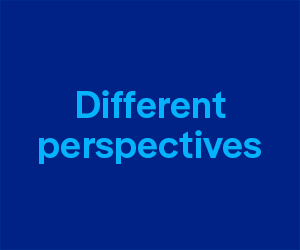
By Richard Stursberg, pictured above, ex-head of Telefilm, English services at the CBC, and Chair of the Canadian Television Fund.
The debate about how to define Canadian content in the future has begun. The Canada Media Fund (CMF) has launched a consultation on the subject. The passage of bill C-11 will require the CRTC to do the same thing.
In a recent article for Cartt.ca, the distinguished communications lawyer, Doug Barrett, argued for the maintenance of the existing definition of Canadian content based on the citizenship of the key members of the creative team. The points system, as it is known, provides two points for the director and the writer, and one point for each for the two lead actors, the director of photography, the music composer, the production designer and the editor, for a total of 10 points. A TV show or film is Canadian if it’s made by Canadians. To qualify for funding from the CMF, a project must have 10 points.
The points system has been in place for many years. Unlike the U.K. point system that provides funding only if a television show or movie is distinctly British (ie. based on British history or stories with characters and settings that are clearly British), the Canadian system has no formal subject matter requirements.
In his article, Barrett notes that critics have complained that the Canadian system’s lack of any reference to content means that Canadian shows and films often appear to be American or made nowhere in particular. He, however, does not believe there is a problem. He writes “…the allegation that most certified production is absent a Canadian look or feel is simply not true.” He argues that what he calls “fuzzy regulations” are in place “…and effectively at work ensuring that certified productions are genuinely Canadian.”
By way of proof, he cites the “fuzzy regulation” CMF rule that the shows it finances must be “shot and set in Canada” (although Canada need not be identified as such) and that most shows are 10/10 productions. This, of course, does not prove that Canadian shows financed by public money “look and feel” Canadian. It simply means they were shot here and made by Canadians.
The question of whether Canadian taxpayers should be footing the bill for shows that appear as ersatz American fare or seem to inhabit some non-nation of no fixed address is not a new one. For many, many years this has been the central complaint by critics of the point system. Why should Canadian shows not really “look and feel” Canadian?
A recent example of the problem is Schitt’s Creek, the brilliant comedy that was commissioned and shown on the CBC. It was created by the Canadian writers and actors, Dan and Eugene Levy. It had an all Canadian cast, ran for six seasons and won endless awards, including 19 prime time Emmy nominations, including outstanding comedy series twice.
The show is wonderful, but at no time does it ever identify where it’s taking place or the nationality of the characters. Despite its greatness, it seems reluctant to say simply that Schitt’s Creek is in Canada and that it’s about a Canadian family.
This purposeful vagueness means that nobody will know the show is, in fact, Canadian. It means that when Netflix distributes it around the world, there is no recognition of its roots; there will be no awareness that Canadians are funny and charming and make beautiful television. That seems a loss.
The pressure to make Canadian shows that don’t admit they are Canadian seems to have increased in recent years. As the budgets of the big broadcasters have shrunk, they are increasingly unwilling to green light a series unless it has an American pre-sale. But the price of a U.S. pre-sale is typically to neuter the fact that it’s Canadian. Americans generally don’t like to watch shows about foreigners; they prefer shows that appear to be – or at least do not contradict – the sense that the characters are like them, citizens of the Land of the Free and the Home of the Brave.
What the debate about Canadian content really needs is a proper study to determine whether the points system has really produced shows that “look and feel” like Canada. Has it genuinely created television series that reflect the country in a way where not just Canadians but everyone in the world that watches them can say, “So that’s Canada, eh?”
The U.K. has an extremely successful industry. It has also been very clear that if public money is to be spent on shows, movies (and games for that matter), they must be culturally British. Its subsidies – unlike ours – are not designed purely on the basis of industrial and employment considerations. Rather, the U.K. proceeds from the correct assumption that the most important cultural industries are TV, movies and games, and that public support for them should ensure a British voice in the world. The U.K. system could provide a powerful model for reforming our antiquated definition of Canadian Content.
Cartt accepts commentary from informed observers of the telecommunications and broadcasting industry. The views reflected in these pieces do not necessarily reflect the views of Cartt. Pieces for consideration should be sent to editorial@cartt.ca.




